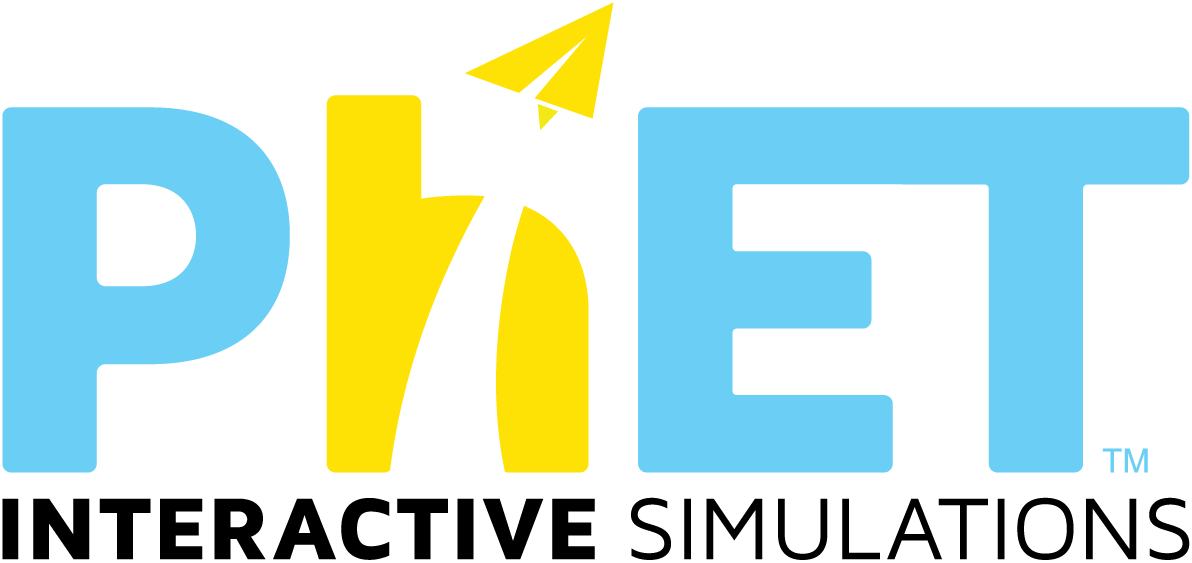334 ผลการสืบค้นที่สอดคล้องกันกับ Middle School
สถานการณ์จำลอง (Simulations)
- Area Model Algebra (HTML5)
- Buoyancy (HTML5)
- Graphing Lines (HTML5)
- Ladybug Revolution
- Lunar Lander
- Make a Ten (HTML5)
- กฎของคูลอมบ์ (HTML5)
- กฎเคปเลอร์ (HTML5)
- กฏของ Hooke (HTML5)
- กฏของโอห์ม (HTML5)
- กฏฟาราเดย์ (HTML5)
- การกระเจิงของรัทเทอร์ฟอร์ด (HTML5)
- การเขียนกราฟ ความชันและจุดตัดแกน (HTML5)
- การควบคุม Optical Quantum
- การเคลื่อนที่
- การเคลื่อนที่ของแมลงเต่าทอง 2D
- การเคลื่อนที่ใน 2 มิติ
- การเคลื่อนที่แบบพรอเจกไตล์ (HTML5)
- การดลองตัวเก็บประจุ: ขั้นต้น (HTML5)
- การดุลสมการเคมี (HTML5)
- การทดลองตัวเก็บประจุ
- การทดลองแม่เหล็กไฟฟ้าของฟาราเดย์
- ชุดคิทวงจรไฟฟ้ากระแสตรง (HTML5)
- การทำงานของยีน: Lac operon
- การแทรกสอดของคลื่น (HTML5)
- การนำไฟฟ้า
- การแปรสัณฐานแผ่นธรณีภาค
- การแผ่รังสีของประจุ
- การแพร่ (HTML5)
- การมองแสงสี (HTML5)
- การรวมเวกเตอร์ (HTML5)
- การรวมเวกเตอร์: สมการ (HTML5)
- การรับประทานอาหารและการออกกำลังกาย
- การลอยตัว: พื้นฐาน (HTML5)
- การสลายตัวให้อนุภาคบีตา
- การสลายตัวให้อนุภาคแอลฟา
- การสั่นพ้อง
- การแสดงออกของยีน - พื้นฐาน
- เกมเขาวงกต
- เกมหาอายุโดยใช้กัมมันตภาพรังสี
- เกลือและการละลาย
- แก๊สขั้นแนะนำ (HTML5)
- คลื่นในเส้นเชือก (HTML5)
- คลื่นเบื้องต้น (HTML5)
- คลื่นวิทยุ & สนามแม่เหล็กไฟฟ้า
- ความเข้มข้น (HTML5)
- ความดันในของไหลและการไหล
- ความต่างศักย์ของจอห์น (HTML5)
- ความต่างศักย์ไฟฟ้าของถ่านไฟฉาย
- ความต้านทานภายในเส้นลวด (HTML5)
- ความโน้มถ่วงและวงโคจร (HTML5)
- ความหนาแน่น (HTML5)
- ค่า pH (HTML5)
- ค่า pH: พื้นฐาน (HTML5)
- จอห์น ทราโวลท์เทจ
- ช่องของเยื่อหุ้มเซลล์
- ชุดคิทวงจรไฟฟ้า: AC (HTML5)
- ชุดเครื่องมือต่อวงจรไฟฟ้า: กระแสตรง (HTML5)
- เซลล์ประสาท (HTML5)
- ตัวสร้างฟังก์ชัน (HTML5)
- ทอร์ค(แรงบิด)
- ทัศนศาสตร์เชิงเรขาคณิต (HTML5)
- ทัศนศาสตร์เชิงเรขาคณิต ระดับพื้นฐาน (HTML5)
- ทางลาด
- ทำให้สมดุล (HTML5)
- ธารน้ำแข็ง
- นิวเคลียร์ฟิชชัน
- บัลลูนกับการลอยตัว
- แบบจำลอง MRI
- แบบจำลองอะตอมไฮโดรเจน
- ปฎิกริยาย้อนกลับ
- ปฏิกิริยาและอัตราการเกิดปฏิกิริยาเคมี
- ปฏิบัติการ การชน (HTML5)
- ปฏิบัติการทดลองกฎของเบียร์ (HTML5)
- ปฏิบัติการพรอเจกไทล์เชิงข้อมูล (HTML5)
- ปฏิบัติการแม่เหล็กไฟฟ้าของฟาราเดย์ (HTML5)
- ปฏิบัติการแรงโน้มถ่วง (HTML5)
- ปฏิบัติการแรงโน้มถ่วงพื้นฐาน (HTML5)
- ปฏิบัติการลูกตุ้มนาฬิกา (HTML5)
- ปฏิบัติการเสมือนชุดคิทสร้างวงจรไฟฟ้า: AC - ปฏิบัติการเสมือน (HTML5)
- ประจุและสนาม (HTML5)
- ประดิษฐ์นิวเคลียส (HTML5)
- ปรากฎการณ์เรือนกระจก
- ปรากฏการณ์โฟโตอิเล็กตริก
- ปรากฏการณ์เรือนกระจก (HTML5)
- พลังงานจากการเล่นสเก็ต: พื้นฐาน (HTML5)
- พลังงานในการสเก็ต (HTML5)
- พื้นเอียง: แรงและการเคลื่อนที่
- มวลและสปริง (HTML5)
- มวล & สปริง
- มวลและปริงขั้นพื้นฐาน (HTML5)
- แม่เหล็กและเข็มทิศ (HTML5)
- แม่เหล็กและแม่เหล็กไฟฟ้า (HTML5)
- โมลาริตี (HTML5)
- โมเลกุลและแสง (HTML5)
- ไมโครเวฟ
- ระบบสุริยะของเรา (HTML5)
- รูปแบบและการเปลี่ยนแปลงของพลังงาน (HTML5)
- รูปร่างโมเลกุล (HTML5)
- รูปร่างโมเลกุล: พื้นฐาน (HTML5)
- แรงดันในของเหลว (HTML5)
- แรงใน 1 มิติ
- แรงและการเคลื่อนที่
- แรงและการเคลื่อนที่: พื้นฐาน (HTML5)
- แรงเสียดทาน (HTML5)
- ลูกโป่งและไฟฟ้าสถิตย์ (HTML5)
- ลูกโป่ง กับ ไฟฟ้าสถิต
- เลขคณิต (HTML5)
- เลเซอร์
- เล่นกับสัดส่วน (HTML5)
- วงจรแบตเตอรี่และตัวต้านทาน
- วงจรสัญญาณ
- ศูนย์กลางและความเปลี่ยนแปร (HTML5)
- สถานะของสสาร (HTML5)
- สถานะของสสาร: เบื้องต้น (HTML5)
- สนามไฟฟ้าในจินตนาการ
- สเปกตรัมของวัตถุดำ (HTML5)
- สภาพขั้วของโมเลกุล
- สมบัติของแก๊ส (HTML5)
- สร้างคลื่นด้วยฟูเรียร์ (HTML5)
- สร้างพื้นที่ (HTML5)
- สร้างโมเลกุล (HTML5)
- สร้างเศษส่วน (HTML5)
- สร้างอะตอม (HTML5)
- สารตั้งต้น, ผลิตภัณฑ์, และสารคงเหลือ (HTML5)
- สารละลายกรด-เบส (HTML5)
- สารละลายน้ำตาลและเกลือ
- เสียง
- แสงที่หักเห (HTML5)
- หลอดนีออนและหลอดดิสชาร์จแบบอืนๆ
- แหล่งกำเนิดไฟฟ้า (HTML5)
- อัตราต่อหน่วย (HTML5)
- อัตราส่วนและสัดส่วน (HTML5)
- อันตรกิริยาระดับอะตอม (HTML5)
- ฮอกกี้สนามไฟฟ้า
- Natural Selection (HTML5)
- Fraction Matcher (HTML5)
- Fractions: Intro (HTML5)
- Molecule Polarity (HTML5)
- Isotopes and Atomic Mass (HTML5)
- Area Model Decimals (HTML5)
- Area Model Introduction (HTML5)
- Area Model Multiplication (HTML5)
- Calculus Grapher (HTML5)
- Curve Fitting (HTML5)
- Equality Explorer (HTML5)
- Equality Explorer: Basics (HTML5)
- Equality Explorer: Two Variables (HTML5)
- Equation Grapher
- Estimation
- Expression Exchange (HTML5)
- Fourier: Making Waves
- Fractions: Equality (HTML5)
- Fractions: Mixed Numbers (HTML5)
- Function Builder: Basics (HTML5)
- Gene Expression Essentials (HTML5)
- Graphing Quadratics (HTML5)
- Least-Squares Regression (HTML5)
- Mean: Share and Balance (HTML5)
- Membrane Transport (HTML5)
- Models of the Hydrogen Atom (HTML5)
- Number Compare (HTML5)
- Number Line: Distance (HTML5)
- Number Line: Integers (HTML5)
- Number Line: Operations (HTML5)
- Number Pairs (HTML5)
- Number Play (HTML5)
- Plinko Probability (HTML5)
- Projectile Sampling Distributions (HTML5)
- Quadrilateral (HTML5)
- Quantum Coin Toss (HTML5)
- Quantum Measurement (HTML5)
- Trig Tour (HTML5)
กิจกรรมการเรียนการสอน
- Gas Properties-Inquiry Middle School
- Sound_Inquiry for Middle School
- Balloons and Static Electricity for Middle School
- Circuit inquiry for Middle school
- Conservation of Energy for Middle School
- Projectile investigation for Middle School
- Pendulum investigation for Middle School
- States of Matter for Middle School
- Gas Investigation for Middle School
- Ramp Middle School Inquiry
- Energy Skate Park for Middle School(Inquiry Based)
- Energy Skate Park Basics
- Middle School Math Sim Alignment
- Density Exploration
- NGSS Alignment Doc for Middle School targeted PhET Sims
- Air Resistance Lesson
- Forces and Motion Lesson
- Chemistry Theater
- Energy Skate Park Basics Lesson
- Natural Selection Lesson by UTeach
- Balloons and Static Electricity
- Density Lesson (with Putty Lab)
- Build an Atom
- Gravity and Orbits Lesson
- Experimental Design with Forces
- Hot Air Balloons Lesson
- Building Fraction Sense Using “Fractions Intro PhET Simulation”
- Wave Basics for Middle Schoolers
- Middle School - Electric Circuits
- States of Matter Simulation
- Two Types of Energy - Mass & Spring
- Build a Molecule
- States of Matter Simulation Lab
- Properties of Waves - Lab Guide
- Middle School and High School Common Core Alignment Document
- Pendulum variables
- Reactions and Rates
- Force introduction
- How do PhET simulations fit in my middle school program?
- Net force
- Investigating Net Force
- Middle School Science
- Heat it Up
- Mixing paint with ratios
- Using the area model with expressions
- Properties of representations of linear functions
- Color Vision pHet Lab
- Middle School - series and parallel circuits
- Describing Location and Movement
- Gas Laws
- Density-introduction
- Exploring EM Forces
- Molecules and Light-inquiry for high school
- Induction (high school version) (Inquiry Based)
- Inquiry Activity: Waves
- Pendulum Virtual Lab 2021
- Arbeitsblatt Natürliche Selektion
- Balanced and Unbalanced Forces - What Causes Acceleration
- Using PhET in High School Chemistry- all my activities in pdf
- the advantages of species physical appearances corresponding to living environment
- Speed of a Wave NGSS aligned
- Molarity Simulation
- Reaction Rates
- Isotopes
- Arithmetic Games (Inquiry Based)
- Sound Waves
- Energy Transfer
- PhET: Energy Forms Worksheet
- Basics of Electricity
- Homework Activity I
- Forces and Motion Basics Interactive Activity
- Pendulum Lab: What Affects the Period?
- PhET Lab States of Matter Basics
- Gravity Lab
- High School Inclusion Class Density Lab
- PhET Interactive Lab on pH
- Measurements of Density
- THE MOVING MAN: DISTANCE, DISPLACEMENT, SPEED & VELOCITY
- High School Chemistry 1 level Balancing Equations
- High School Chemistry 1 level: Limiting reagents
- Visual Nucleosynthesis [Basic High School]
- Collecting and analyzing density data
- Greenhouse effect activity
- PHET: Masses and Springs 2021
- High School Exploratory Lab for Balloons and Static Electricity
- Electric Fields of Dreams for High School Exploratory Lab
- Exploring the density of mysterious objects
- Float or Sink? An essay on the density of materials
- Conservation of Energy - conceptual
- Wave Interference- Waves (Sound and Light)
- Comparing the properties of different materials
- What Type of Light Bulb Should I buy for my Grandma?
- Projectile Motion
- Introduction to Waves: Liquid Matter, Sound, and Light
- Exploring Chemical Reactions and the Law of Conservation of Mass
- States of Matter - Lab Simulation - student procedures and questions
- Lesson Plan for Teaching Shapes of Molecule
- Induction (college homework version) (Inquiry Based)
- Bunny Blitz
- PhET Energy Forms and Changes Virtual Lab
- (BNCC) Comparando as propriedades de diferentes materiais
- Projectile Motion Discovery
- Geometric figures
- Colors, Bunnies and Wolves: does the strongest survive?
- Water Waves in an Electric Sink
- Simple Pendulum
- Opdrachten bij Reactanten, producten en resten
- Conservation of Energy Exploration with Skatepark Physics
- The Simple Pendulum- What affects the Period of the pendulum?
- Bending Light Student Worksheet
- Lens Inquiry
- Molecule Shapes Advanced
- Gravity Force Lab
- Investigating Forces and Motion Through Inquiry
- Exploring Stars and Blackbodies
- Experiment to determine relationship between wavelength, frequency and speed
- Ohm's Law Lab - Virtual
- Ray Diagrams for Concave and Convex Mirrors
- Electromagnetic Induction
- Making STABLE Atoms Lab
- Force and Motion Basics - Second grade
- Refraction
- Reactions and Rates: Learning Goals from the design team (Inquiry Based)
- Projectile Motion Lab #2
- Conservation of Energy (Energy Skate Park)
- Moving Man II: Acceleration vs. Time
- Moving Man I: Velocity vs. Time Graphs
- Charges and Fields
- Ohm's Law, Kirchhoff's Laws, Resistors in Parallel and Series Lab
- The Two-Plate Special
- Energy Forms and Changes
- Balancing equation
- Introduction to Current, Voltage, and Resistance
- Projectile Motion
- Bouncing Off the Walls
- Heat or temperature
- My Solar System
- Exploring the Energy Skate Park
- Newton's Second Law of Motion
- Charges and Charged Objects Investigation
- 'Lectronic Plates
- Pixel Peeping
- Moving Man Motion Graph Review
- Magnet and Compass
- Spring Force, Spring Constant and Elastic Potential Energy
- Heat or temperature?
- Build An Atom Guided Inquiry
- Introduction to the Gas Laws using PhET simulations
- Quest for the Coulomb Cup
- Cavendish Lab
- MS and HS TEK to Sim Alignment
- DC Circuit Lab
- Projectile Motion Worksheet
- Greased Lightning
- Introduction to the gas laws
- Harmonic oscillator
- Worlds of Wonder
- Beer's Law Lab: Introduction to Beer's Law
- Electric Field Hockey Post-Game Analysis
- Atomic Models and Spectroscopy
- Computer Simulations as a Tool to Assist Teaching Basics of Electromagnetism (Simulações Computacionais Como Ferramenta Auxiliar ao Ensino de Conceitos Básicos de Eletromagnetismo)


